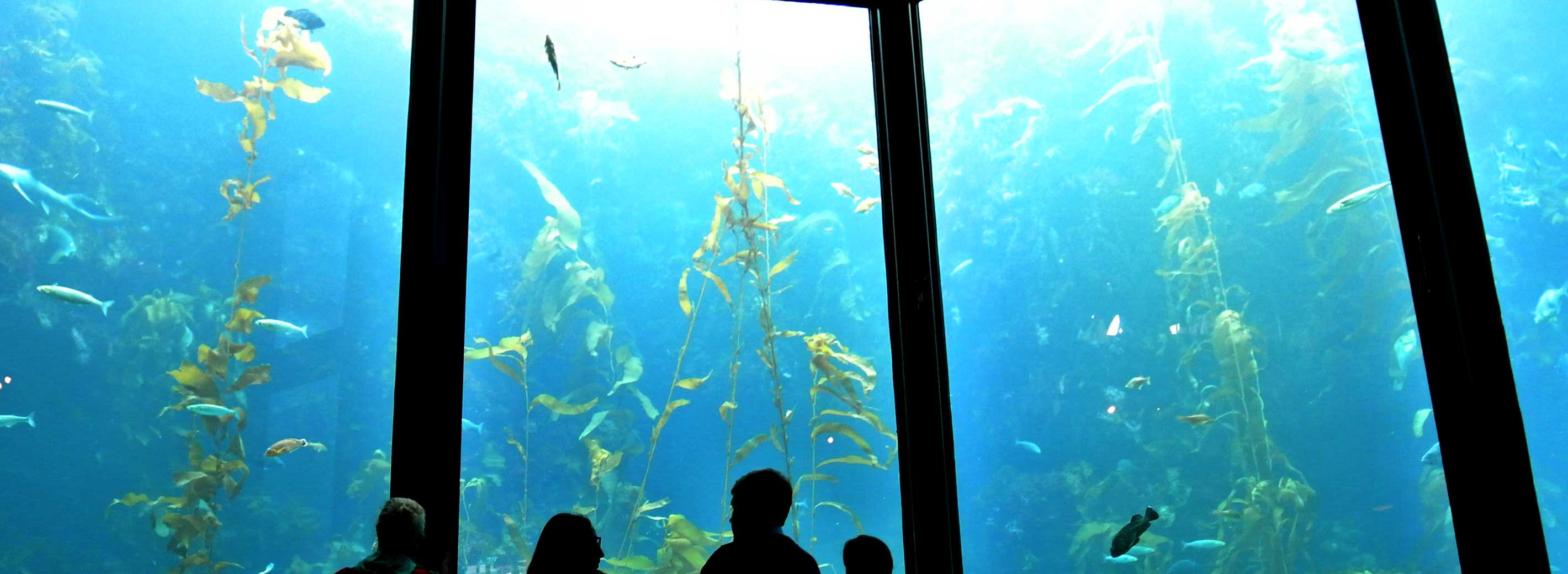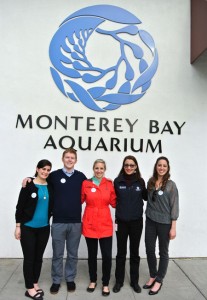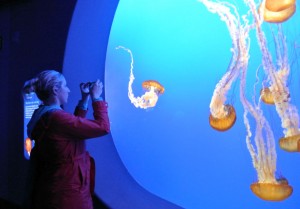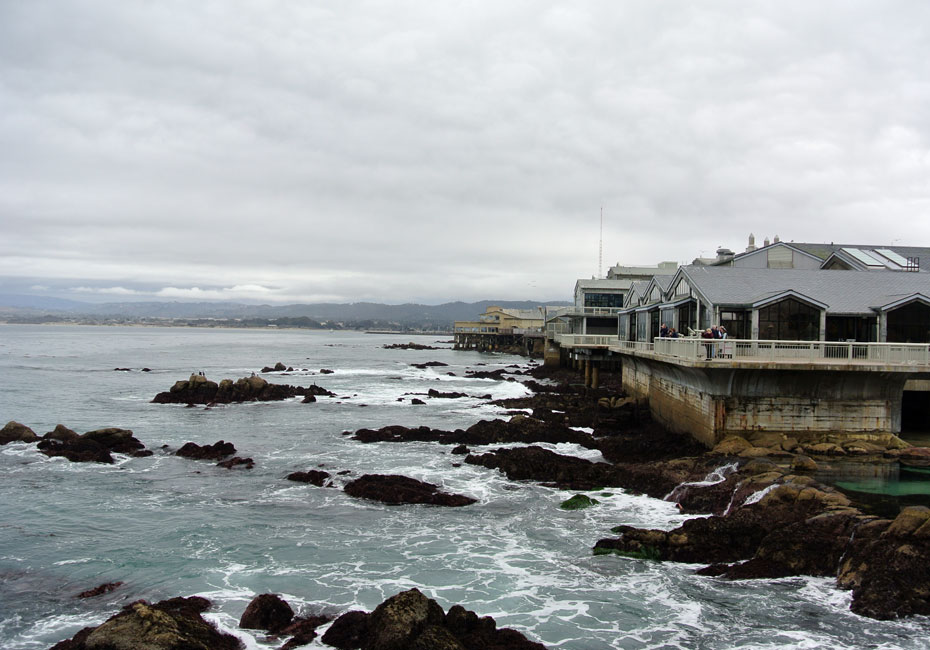
Seeing Seafood Up Close Brings Sustainability into Focus
The oceans are a world unto themselves, and with the exception of the rare scuba diver among us, we never get the chance to experience its wonders from anywhere but above. The Monterey Bay Aquarium was designed to provide the humbling perspective of viewing an ocean ecosystem from within.

BAMCO Fellows Alyse Festenstein and Andrew Monbouquette, Waste Specialist Claire Cummings, Seafood Watch Outreach Coordinator Simone Jones, and Senior Fellow Nicole Tocco
As I and the other current and former Fellows learned on our recent field trip to the aquarium — whose Seafood Watch program has long been an important Bon Appétit partner organization — one thing that sets it apart is its mission to inspire the conservation of the oceans. And inspired we were by the end of the day.
As we toured the aquarium, I was awed by the magnificence of the creatures on display. Salmon, for example, are born in fresh-water rivers and then migrate to spend most of their lives in the sea. They return to those rivers to spawn — usually to the near-exact spot of their birth, a phenomenon that scientists are still trying to figure out.
Tuna swim near the surface, down near the ocean floor, and at every depth in-between at astonishing speed (some can swim as quickly as 60 miles per hour) and their bodies are designed to camouflage them from equally mobile predators. Their dorsal side is dark and blends with the ocean floor when viewed from above. Their belly is lighter, to blend with the surface when viewed from below.
According to the National Oceanic and Atmospheric Administration, the oceans cover more than 70% of the earth’s surface and we have explored only 5% of it. Unfortunately, we’ve managed to do a lot more damage than that statistic would suggest.
It is estimated that more than 80% of the Earth’s large fish are now gone. What’s even more concerning that that: In the 1980s, global landings (the pounds of wild seafood caught and – you got it – brought to land) started to decrease. While some might mistakenly interpret this as a positive step, the decrease in global landings wasn’t a result of decreased effort (which has gone up), but because we’re running out of fish to catch. Things need to change if we want to maintain these phenomenal ocean ecosystems and our last source of wild food.
In 1999, the Monterey Bay Aquarium launched its Seafood Watch program, which helps consumers and businesses make choices for healthy oceans by providing science-based recommendations. The program currently has 2,500 recommendations covering 405 species.
Since 2002, Bon Appétit has purchased only seafood rated Best Choice or Good Alternative according to the Seafood Watch recommendations for commercial buyers. In fact, the Aquarium said in its annual “Turning the Tide” report that “Bon Appétit Management Company has become an international model for what is possible in sustainable food service.” And, by purchasing according to the Seafood Watch Guidelines for Sustainability as well as also supporting small, local fishermen, our chefs do just that.
Seafood has unique qualities and challenges, but in this journey toward a more sustainable food system there are some common threads. We all need to think more about what we’re eating; who grew, raised, or caught it — and how they did so. One Monterey Bay Aquarium display quotes Anne Stevenson saying “The sea is as near as we come to another world.” Without asking the right questions and going out of our way to source seafood more responsibly, we’re going to destroy that other world before we have a chance to appreciate its beauty or understand its complexity.

